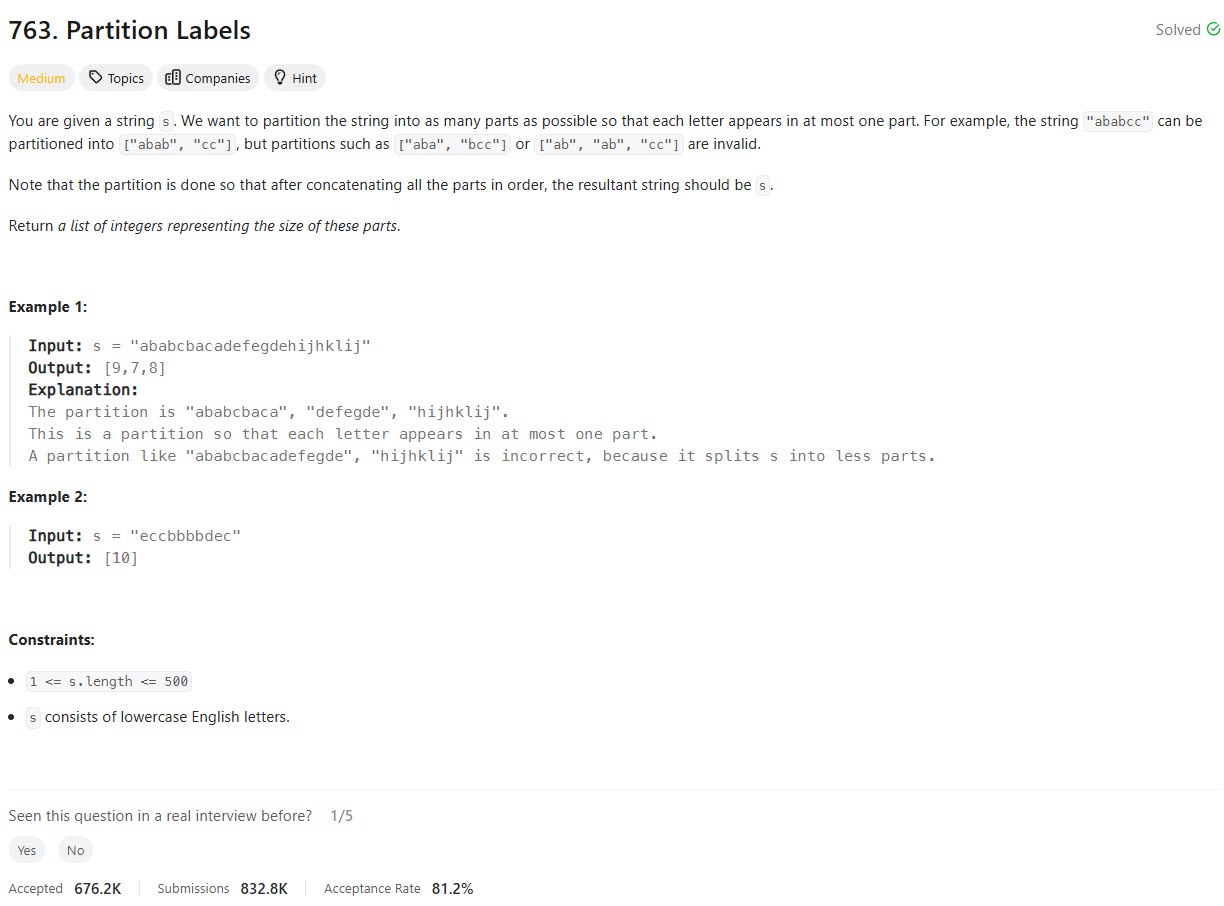Problem of The Day: Partition Labels
Problem Statement

Intuition
The goal is to partition the given string into as many non-overlapping segments as possible, where each character appears in only one segment. The key observation is that a partition should end when all occurrences of the characters in that segment are included.
Approach
-
Track Last Occurrences:
- First, iterate through the string to record the last index of each character in a dictionary (
last_occurrence). - This helps us determine the furthest index a partition must extend to.
- First, iterate through the string to record the last index of each character in a dictionary (
-
Partition the String:
- Iterate through the string while maintaining the rightmost boundary (
end) of the current partition. - If the current index reaches
end, it signifies the completion of a partition. Add the partition length to the result list and updatestartto begin a new partition.
- Iterate through the string while maintaining the rightmost boundary (
Complexity
-
Time Complexity:
- The algorithm processes the string twice: once to build the
last_occurrencedictionary and once to determine partitions. - This results in an overall time complexity of O(n), where n is the length of the string.
- The algorithm processes the string twice: once to build the
-
Space Complexity:
- The extra space used is for the
last_occurrencedictionary, which stores at most 26 entries (for lowercase English letters). - Therefore, the worst-case space complexity is O(1) (constant space).
- The extra space used is for the
Code
from collections import defaultdict
from typing import List
class Solution:
def partitionLabels(self, s: str) -> List[int]:
last_occurrence = defaultdict(int)
for i, c in enumerate(s):
last_occurrence[c] = i
start, end = 0, 0
res = []
for i, c in enumerate(s):
end = max(end, last_occurrence[c])
if i == end:
res.append(end - start + 1)
start = end + 1
return res
Other Approach - Merge
class Solution:
def partitionLabels(self, s: str) -> List[int]:
N = len(s)
res = []
hash_map = OrderedDict()
for i, c in enumerate(s):
hash_map[c] = i
start = end = 0
for c, idx in hash_map.items():
left_set = set(s[:idx])
right_set = set(s[idx:])
end = idx
partition = True
for ch in left_set:
if ch != c and ch in right_set:
partition = False
break
if partition:
res.append(end - start + 1)
start = end + 1
return res